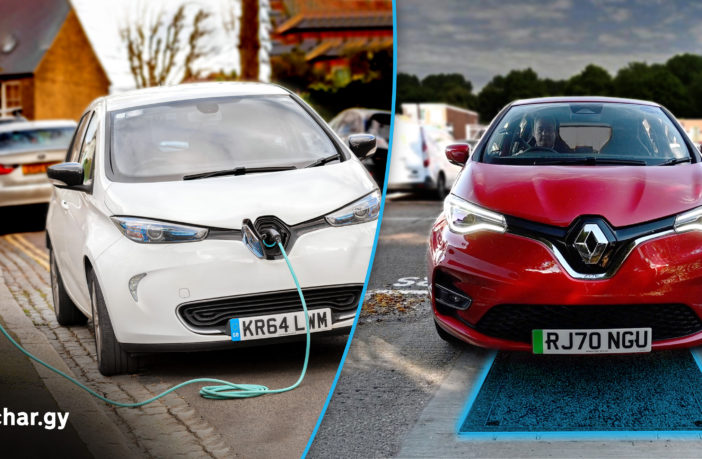The world’s first trial of public EV inductive charging has taken place in the UK, with the contactless technology enabling electric vehicles to be charged automatically without the need for cables or any driver interaction with a charge point.
Such charging solutions are increasingly in demand with the advent of ULEZ zones appearing in many cities. However, while metropolitan locations benefit the most from EV adoption to improve air quality, the density of residential areas makes cities the most challenging locations to provide the essential charging infrastructure required to provide a complete solution to the problem. Charging technology company char.gy has a mission to make public charging stations ubiquitous, so households constrained by on-street parking can own and operate electric vehicles.
With an existing portfolio of lamp post charging technologies and services already providing solutions for urban on-street parking, char.gy’s new inductive innovation automates and further streamlines the charging process, declutters the residential kerbside in urban areas and provides a solution accessible to all drivers.
By integrating charging infrastructure into the road surface and an induction charging pad installed in the electric vehicle (either as original equipment or retrofit), the driver experience becomes entirely streamlined and automated. It simply requires the driver to park the vehicle over the charge plate. The absence of cabling removes one of the problems that is otherwise inherent to on-street charging, removing trip hazards for pedestrians and allows less mobile, elderly or disabled drivers to avoid navigating kerb drops between road and pavement in order to plug in cumbersome charging cables.
This very first public trial has been launched in Marlow under the auspices of Buckinghamshire Council, using a low-power inductive charging installation provided by technology partner IPT Technology and adapted vehicles that are available for public hire through the hiyacar.co.uk app and website. Members of the public have been invited to hire the adapted EV for periods of up to three days and provide feedback on their enhanced experience of streamlined EV charging.
char.gy’s Marlow trial is part of a wider series of evaluations being conducted in different geographies in the UK with Office for Zero Emission Vehicles and Innovate UK funding to help realize the UK government’s 2035 delivery plan to transition to zero emission cars and vans. char.gy’s suite of technologies and associated services are designed to help meet the specific requirement to remove key barriers in the transition to EVs.
“The trial of inductive charging in Marlow really provided a sense of what the near future will look like. As a typical local authority looking to incentivize the adoption of EVs, managing the street scene and accommodating a wide variety of needs and preferences on our residential roads and pavements has – until now – proven to be very challenging. Inductive charging solves a great many of the problems and looks like a clear contender for how we organize our clean power infrastructure in the best interests of all of our residents,” said Councillor Peter Strachan, Cabinet Member for Climate Change & Environment at Buckinghamshire Council.
The next stages of the project will see the scheme extended to a variety of different urban contexts and geographies as a precursor to the test of the second-generation inductive fast charger which has been developed by char.gy’s partner, Warwick Manufacturing Group.
Myles Roberts, char.gy’s Project Manager for inductive charging said, “Our business has really focused on use-cases where charging solutions are complicated. Inductive charging takes another step towards making on-street charging in urban contexts the de facto solution for people without off-street parking who want an EV; so we’re delighted to have successfully concluded the first trial of the technology ‘in the wild’. From here on, we’re broadening the trial contexts with a number of new locations and we will also be moving the technology another step forward towards commercialization with our partners.”
Source: https://www.electrichybridvehicletechnology.com/




